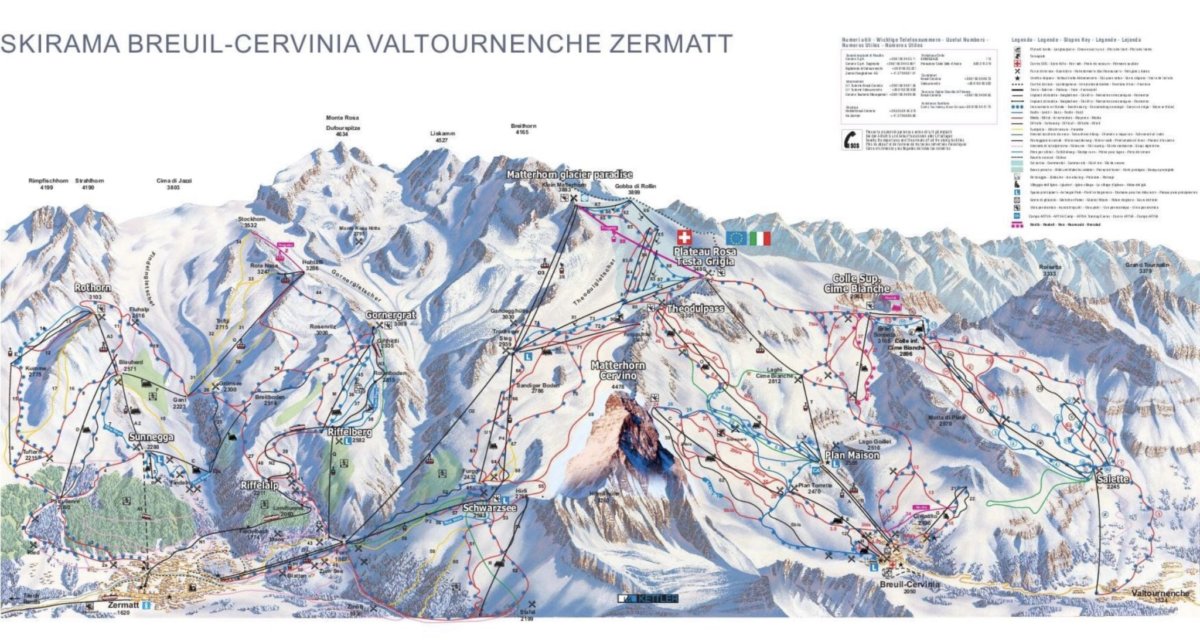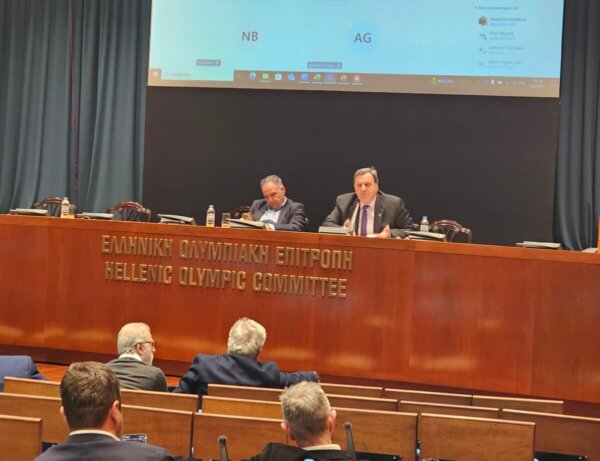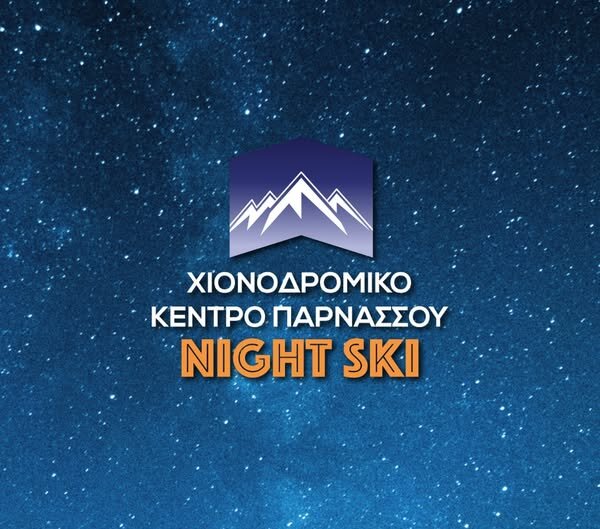
2022 will mark the premiere of the first-ever cross-border FIS World Cup event. On October 29-30, 2022, the ‘Matterhorn Ski Paradise’ ski area will host the men’s Downhill, starting on the Swiss side of the ski resort and continuing on the Italian side, where the race will finish. The women’s Downhill will take place on November 5-6, 2022.
The ski area Matterhorn Ski Paradise (or, in Italian, Cervino Ski Paradise) combines the Zermatt ski area in Switzerland and the Cervinia ski area in Italy. Together the ski area offers 225 miles (360km) of groomed runs and, thanks to its glacier, offers skiing and boarding 365 days of the year. This year was the first time the glacier had to shut for summer skiing temporarily during the European heatwave.
The newly designed race course has been named ‘Gran Becca,’ which means ‘the great peak’ in the local Italian dialect, referencing the iconic Matterhorn. While Zermatt is in the German-speaking area of Switzerland, most of the course will be in Italy; therefore, the organizing committee went with an Italian name.
The architect of the race course is one of Switzerland’s best downhill specialists, retired race skier Didier Défago, who was Swiss National Champion in Downhill in 2003 and GS in 2004. During his impressive 19-year career from 1996 to 2015, he podiumed at 16 World Cup events, won five gold medals — three in Downhill and two in Super-G — and competed at four Olympics, winning Gold in Downhill at the 2010 Vancouver games.
The ‘Gran Becca’ course will start just below the Gobba di Rollin peak in Switzerland at an altitude of 12,205 ft (3,720m), the highest start for any World Cup race. From there, the course starts with the jump ‘Matterhorn Sprung’ and makes a left turn to the ‘Sérac Traverse.’ The course continues over the ‘Muro Ventina’ and goes over the shoulder of ‘Spalla di Rollin’ into the straight of ‘Plateau Rosa Schuss.’ Before the finish line are the two jumps of ‘Salto Furggen’ and ‘Salto Cime Bianche,’ which should provide spectators in the finish area with some spectacular air before skiers finish the 2.3 miles (3.7km) long course down a total of 2,904ft (885m) of vertical.
Another first for the ‘Gran Becca’ race is that the starting house will be a revolutionary lightweight and portable 975 sq ft (90 sqm) pneumatic construct that provides a heated area for athletes. The heating will be entirely solar-powered by a 650 sq ft (60 sqm) photovoltaic system. Despite its size and high-tech features, the structure can be assembled and disassembled easily. Most FIS race starts are temporary constructs and are typically tents, as they can be easily assembled and disassembled. Race courses are often located in the middle of ski resorts and are only needed for a few days.
If you are keen to watch the event, tickets are for sale on SwissSki. Alternatively, why not volunteer for the event? As a volunteer, you get free lift passes, meals, and clothes — plus, you are right in the middle of all the action. It is quite a fascinating experience to be in the midst of all the action. As a regular volunteer at FIS races, I can only recommend working for a few days at a World Cup event.
- Πηγή: https://snowbrains.com




